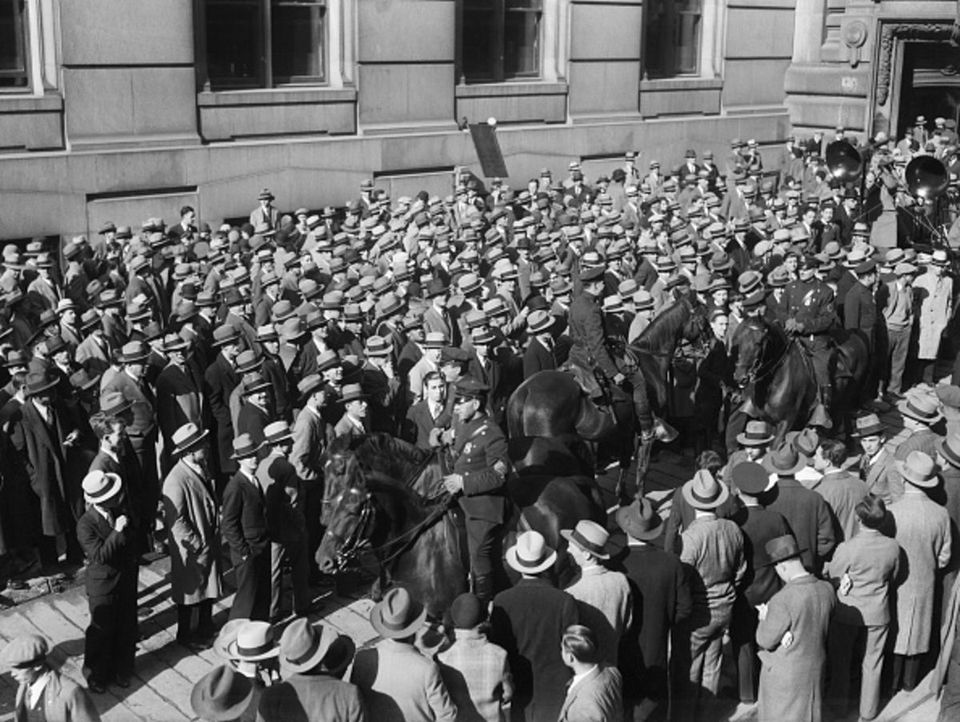#77: Markets and The Madness of Crowds – Robert Shiller
4 min read

Robert J. Shiller is Sterling Professor of Economics at Yale University and one of the 2013 recipients of the Nobel Prize in Economic Sciences. He is the author of multiple books including the bestselling Irrational Exuberance. He is known for predicting the crashes of both the dot-com and housing bubbles.
Show notes
Selected links
- Follow Bob: Website | Twitter
- Link to Bob’s two charts
- Irrational Exuberance, by Robert Shiller
- Narrative Economics, by Robert Shiller
- The Wordly Philosophers, by Robert Heilbroner
- Flatland, by Edwin Abbott
- Mathematics and the Imagination, by Edward Kasner and James Newman
- Consilience, by E O Wilson
- Animal Spirits, by George Akerlof and Robert Shiller
- Financial Markets, Bob’s Coursera course
- ‘Efficient Capital Markets: A Review of Theory and Empirical Work’, 1970 paper by Eugene Fama
- Market Volatility, by Robert Shiller
- ‘The Emotional Dog and Its Rational Tail’, paper by Jonathan Haidt
- ‘Fama on Finance’, 2012 Econtalk interview
- ‘If you believe in bubbles, then why are you a libertarian?’, blog post by Scott Sumner
- ‘Eugene Fama, King of Predictable Markets’, the 2013 New York Times profile in which Fama describes himself as an “extreme libertarian”
- Eugene Fama Nobel Prize Lecture
- The History of Early Rome, Books I–V, by Livy
- Manias, Panics, and Crashes, by Charles Kindleberger
- Famous First Bubbles, by Peter Garber
- This Time Is Different, by Carmen Reinhart and Kenneth Rogoff
- 2002 profile of Charles Kindleberger by The Wall Street Journal
- ‘Are Some Mutual Fund Managers Better than Others?’, paper by Judith Chevalier and Glenn Ellison
- ‘Stock Prices and Social Dynamics’, 1984 paper by Robert Shiller
- Thinking, Fast and Slow, by Daniel Kahneman
- Video of the Bondi Beach 2018 Christmas Day rave
- A Crisis of Beliefs, by Nicola Gennaioli and Andrei Shleifer
- ‘The affect heuristic’, paper by Paul Slovic
- ‘The Efficiency of the Market for Single-Family Homes’, the seminal paper by Karl Case and Robert Shiller
- Micrographia, by Robert Hooke
- 2007 interview with Eugene Fama which mentions housing market efficiency
- ‘How a Bubble Stayed Under the Radar’, Bob’s The New York Times article on informational cascades
- ‘On the Likely Extent of Falls in Irish House Prices’, paper by Morgan Kelly
- ‘Availability Cascades and Risk Regulation’, paper by Timur Kuran and Cass Sunstein
- ‘Ireland’s Housing Boom: What has Driven it and Have Prices Overshot?’, a 2006 paper attempting to justify Ireland’s housing bubble
- ‘Are Home Prices the Next Bubble?’, ill-fated paper by Jonathan McCarthy and Richard Peach
- ‘Bubble, Bubble, Where’s the Housing Bubble?’, ill-fated paper by Smith and Smith
- ‘Tax Subsidies to Owner-Occupied Housing: An Asset-Market Approach’, paper by James Poterba
- ‘Is Housing Overvalued?’, 2014 paper by Ryan Fox and Peter Tulip
- ‘A Model of the Australian Housing Market’, 2019 paper by Trent Saunders and Peter Tulip
- House of Debt, by Atif Mian and Amir Sufi
- ‘Housing Supply and Housing Bubbles’, paper by Edward Glaeser, Joseph Gyourko and Albert Saiz
- The General Theory of Employment, Interest, and Money, by John Maynard Keynes
- ‘The Market for Financial Advice an Audit Study’, paper by Sendhil Mullainathan
- ‘Long term housing prices in Australia and some economic perspectives’, Nigel Stapledon’s PhD thesis
- Dymphna Boholt’s property podcast
- ‘Clever Odysseus: narratives and strategies of rental property investor subjectivity in Australia’, paper by Chris Martin
- ‘Property Obsessed Australians’, HSBC Survey
- On The Beach, film
- ‘Dalio warns of ‘mini-bubble’ in property’, AFR article
Topics discussed
- How did Bob first encounter economics? 9:35
- Why didn’t Bob study a physical or biological science rather than economics? 10:07
- The geometry teacher who inspired Bob in mathematics. 11:31
- Why did a young Bob develop a stress fracture of his metatarsal? 12:50
- Does Bob view it as a tragedy he can never know everything about the world? 14:13
- ADHD and interdisciplinarity. 14:51
- Bob’s obsession with the origins of words and ideas. 17:57
- What were the big debates in economics when Bob arrived at MIT in the late 1960s? 20:17
- What is the Efficient Markets Hypothesis? 21:54
- Why does it matter whether markets are efficient or not? 25:10
- When did Bob stop believing in the Efficient Markets Hypothesis? 26:36
- Eugene Fama. 28:48
- How does Bob define a speculative bubble? 35:46
- People generally take Dutch Tulip Mania (1637) as the world’s first bubble, but does Bob know of any earlier examples? 40:32
- Charles Kindleberger and narrative-based accounts of bubbles. 43:58
- The Efficient Markets Hypothesis is a half-truth. 47:33
- Quantifying “animal spirits”. 51:52
- Systems 1 and 3. 55:09
- Andrei Shleifer’s work on investor expectations and beliefs. 58:39
- What Bob learned from his 1986 survey of investors after a stock market crash. 1:01:09
- The limits of survey evidence. 1:04:55
- What does psychology add to economics that preferences or information can’t? 1:07:43
- When did Bob first become interested in real estate markets? 1:12:30
- What is special about patterns in home prices? 1:14:34
- Housing markets versus stock markets: what is more efficient? 1:17:57
- Housing bubbles as availability cascades. 1:23:22
- Fundamentals folly. 1:29:08
- Peter Tulip’s test for identifying housing bubbles. 1:32:21
- How do housing bubbles start: credit or crowds? 1:35:25
- Short term versus long term speculation. 1:41:04
- Joe’s update on the Australian housing market. 1:44:20
- Bob’s theory on the Australian housing market. 1:56:12
- How big is Australia’s housing bubble? 2:04:01
- Should we find a new metaphor for housing crazes? 2:07:08
- What separates viral narratives from the ones that fizzle out? 2:09:52
- Speculative contagions. 2:11:42
